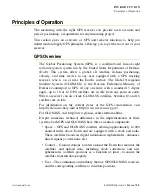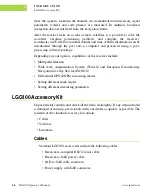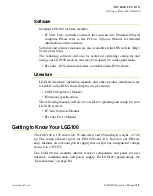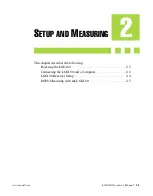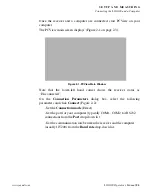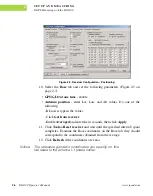
www.javad.com
LGG100 Operator’s Manual
1-5
I N T R O D U C T I O N
Receiver Overview
• Availability – The availability of satellites affects the calculation of
valid positions. The more visible satellites available, the more valid
and accurate the position. Natural and man-made objects can block,
interrupt, and weaken signals, lowering the number of available
satellites.
• Integrity – Fault tolerance allows a position to have greater
integrity, increasing accuracy. Several factors combine to provide
fault tolerance, including:
–Receiver Autonomous Integrity Monitoring (RAIM) detects faulty
GPS and GLONASS satellites and removes them from the position
calculation.
–Wide Area Augmentation System (WAAS) and European
Geostationary Navigation Overlay Service (EGNOS) creates and
transmits DGPS correction messages.
–Five or more visible satellites for only GPS or only GLONASS;
six or more satellites for mixed scenarios.
–Current ephemerides and almanacs.
–Several algorithms to detect and correct faulty information.
Conclusion
GNSS users can use JNS GNSS receivers to collect data from a network
of satellites and control stations to triangulate precise points anywhere
on Earth.
This overview simply outlines the basics of GPS and GLONASS
positioning. For more detailed information, visit the JNS website
When power is turned on and the receiver self-test completes, the receiver’s 50
channels initialize and begin tracking visible GNSS satellites. Each of the
receiver’s channels can be used to track C/A-L1 and Carrier signals. The
number of channels available allows the receiver to track all visible satellites at
any time and location.
Summary of Contents for LGG100
Page 2: ......
Page 6: ...iv LGG100 Operator s Manual www javad com Notes ...
Page 8: ...vi LGG100 Operator s Manual www javad com Notes ...
Page 24: ...1 10 LGG100 Operator s Manual www javad com Notes ...
Page 50: ...4 8 LGG100 Operator s Manual www javad com Notes ...
Page 58: ...B 6 LGG100 Operator s Manual www javad com APPENDIX Specifications B ...













